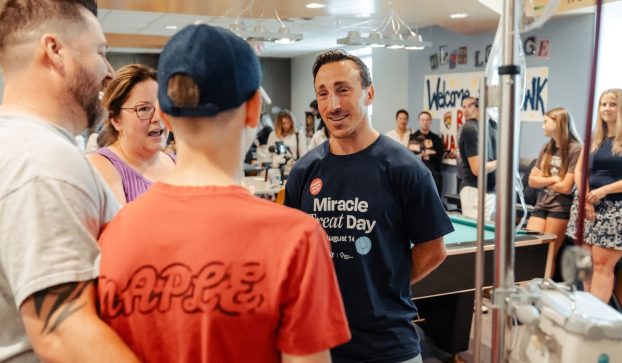FLAP’s flyers for feathered friends
Sometimes birdwatching in the city can be a grisly sport, especially when migratory flocks and glass towers collide.
Non-profit Fatal Light Awareness Program (FLAP) turned to DDB Toronto to help in its mission “to safeguard migratory birds in the urban environment through education, research, rescue and rehabilitation,” and DDB turned to art director Paul Riss, who has been a birder since the age of 10, and copywriter Matt Antonello.
“It’s an issue that nobody knows about,” says Riss, who, as part of his research, joined a group of volunteers who collect dead and dying birds around the city. “Being a birder as long as I have been, I didn’t even know. We wanted something that would really grab people’s attention.”
The result was “Common Birds of Toronto,” a field guide with a mortal twist: 10 native birds, from the American Woodcock to the White-throated Sparrow, are depicted dead on their backs. Beautifully illustrated by professional naturalist painter Barry Kent MacKay, the entries include standard descriptions of the birds and their habitats, as well as gruesome statistics on when they are most likely to collide with buildings and the number of estimated fatalities in the Greater Toronto Area.
As part of the annual Lights Out Toronto awareness effort last fall, the pamphlets were distributed to attendees at the City of Toronto’s Symposium on Bird Conservation in Urban Areas and at an ornithological lecture at the Royal Ontario Museum, as well as handed out to passersby and mailed out to FLAP members. The birds were also featured on transit shelters around the city. Traffic to Flap.org increased 120%, and other cities in the region are reprinting the guide for further distribution. The campaign was a finalist at the LIAAs.

Hazco’s blueprint for demolition
Architects and developers speak a secret language known as AutoCAD. So when Taxi Calgary set out to reach this niche group for client Hazco Demolition Services, they opted for fluency, with a touch of nostalgia.
“Demolition is hardly a high-volume business, so it was easy to know who your target was almost immediately,” says CD Trent Burton, who worked with copywriter Nick Asik and AD Kelsey Horne on AutoCAD-crafted messaging. “Those people know immediately what it was saying.”
Sent to every major firm in Canada as an introduction to the company, telescope-style document tubes revealed blueprints of a perfectly demolished building, done professionally to scale by Horne, who is trained as an architectural technologist. “I’m sure my parents are happy because I actually used the education they paid for.”
Jump to:
Cyber
Design
Film
Radio
Promo
Media
Outdoor
Press
PR
Titanium
Integrated
Grand Prix For Good























